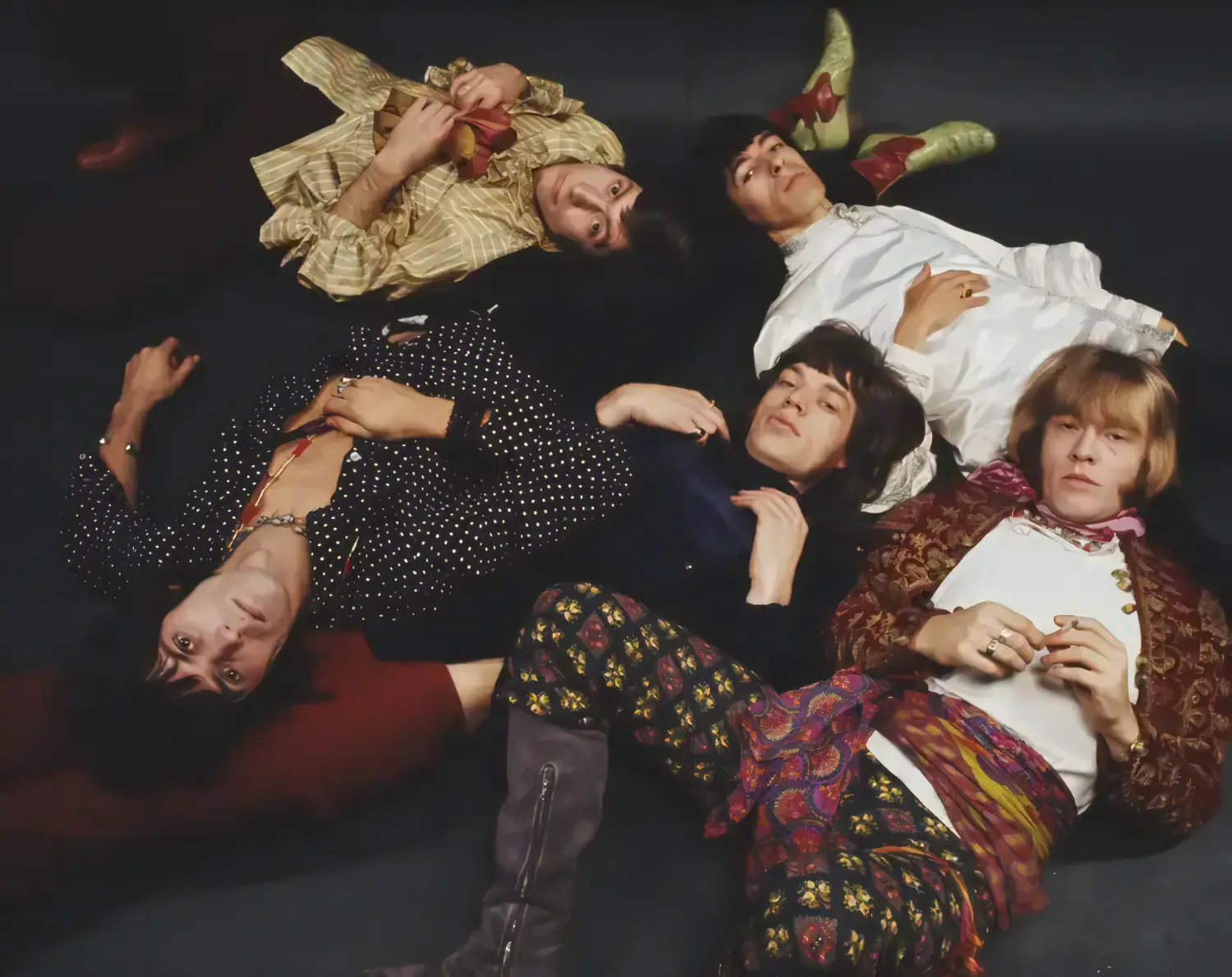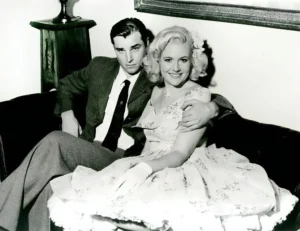Stride through the harmonious realms of music and fashion, where each era’s rhythm shapes the threads of time.
Witness how icons from Elvis to Beyoncé, and movements from punk to streetwear, have woven the soundtrack to our sartorial evolution.
Join us in unraveling the symphony of music & fashion, where every stitch is a note, and every trend a melody in the grand opus of culture.
1.Jazz Age: The Roaring Twenties and the Birth of Modern Fashion
As jazz clubs lit up the night in the 1920s, fashion took a turn towards the glamorous and rebellious.
The improvisational nature of the genre directly influenced the freedom and fluidity of the flapper dress, allowing for expressive dance movements.
And the women embraced it, a dazzling garment characterized by its drop waist, sequins, and fringe, with their influences still felt today in shiny modern party wear.
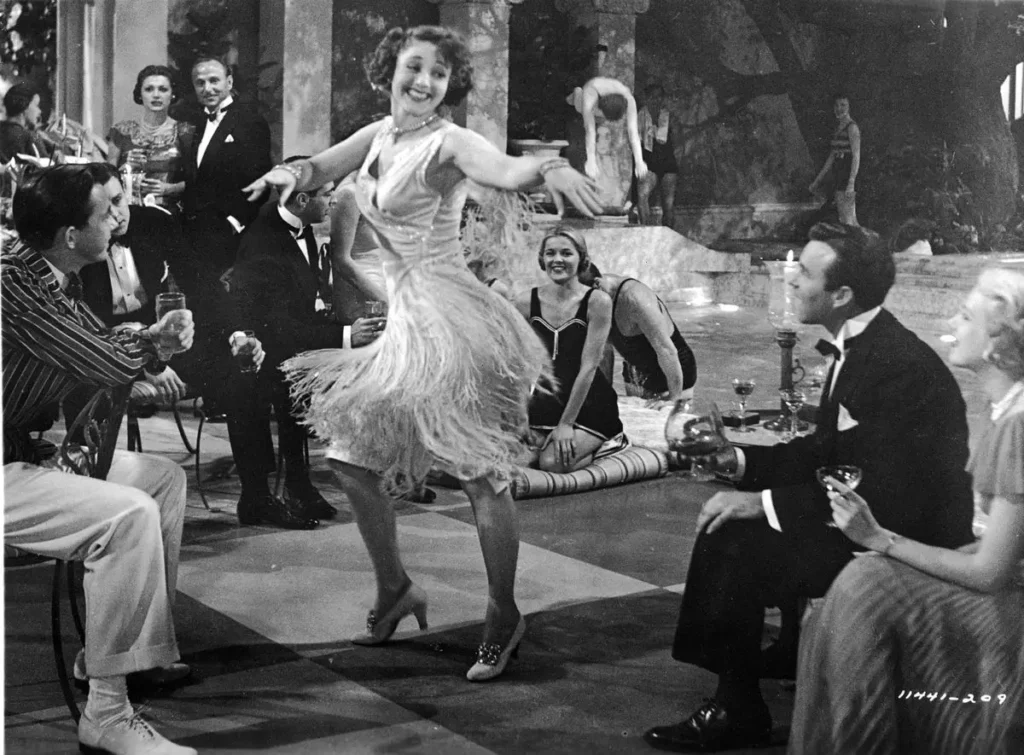
Image Credit: Paramount Pictures/Getty Images
The cloche hat, a snug-fitting, bell-shaped hat, became the emblem of chic femininity, often accompanied by bobbed hair.
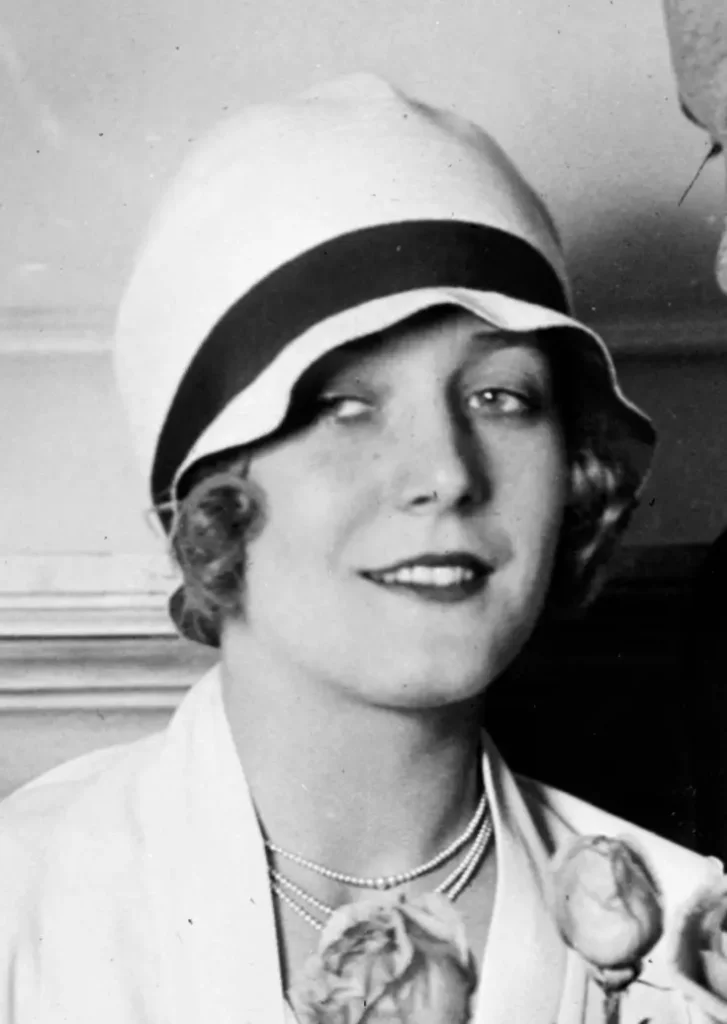
Men donned zoot suits with high-waist, wide-legged trousers and long coat tails, a style that became synonymous with jazz musicians moving forward.
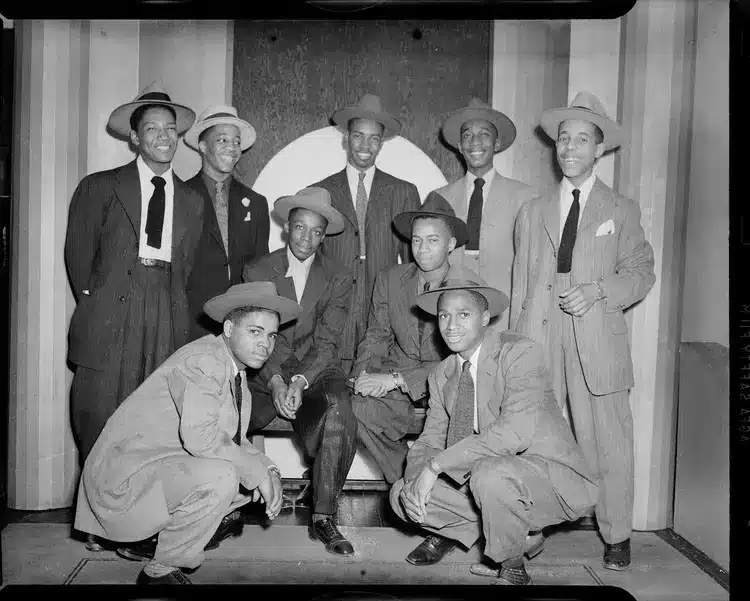
2.The Golden Age of Hollywood: 1930s-1950s
In the Golden Age of Hollywood, cinema and music stars set the fashion agenda.
The 1930s saw the rise of slinky, bias-cut gowns, epitomized by Jean Harlow’s satin dresses, reflecting the smooth tunes of swing music, as seen in films like “The Great Ziegfeld” (1936).
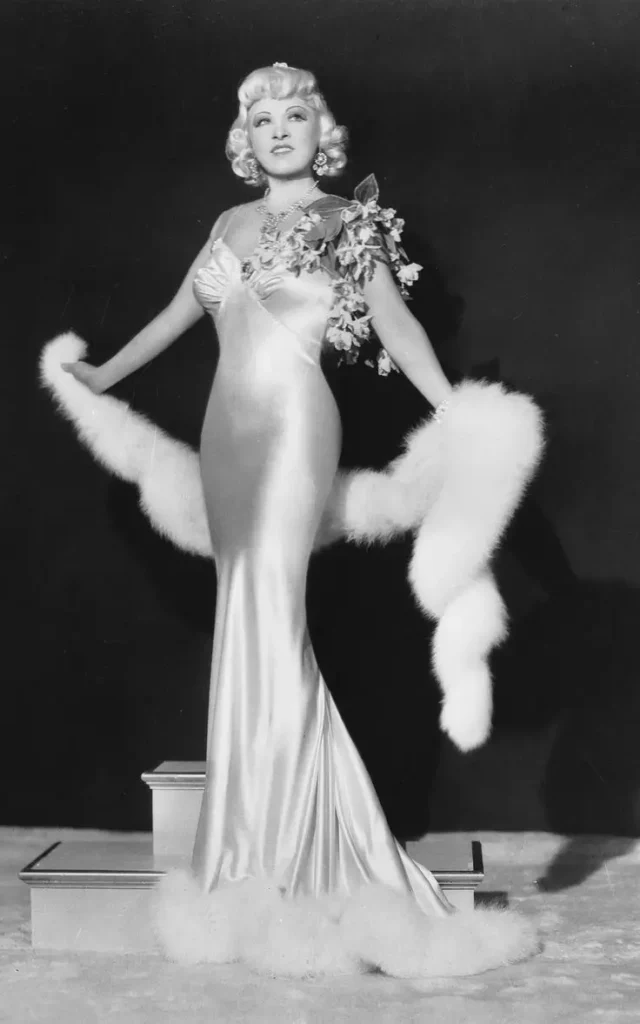
The 1940s introduced the structured military look, with padded shoulders and nipped-in waists influenced by wartime necessity and big band music’s disciplined rhythms.
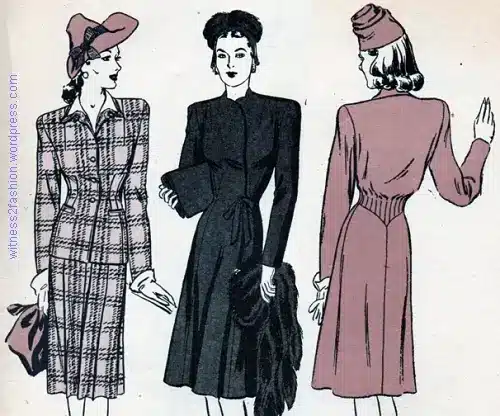
Image Credit: witness2fashion.wordpress.com
Icons like Marilyn Monroe and Elvis Presley wore daring, curve-hugging outfits and leather jackets, respectively, influencing their legions of fans to adopt similar styles.
3.Rock ‘n’ Roll and the Birth of Teenage Culture: 1950s-1960s
The rebellious spirit of rock ‘n’ roll directly translated into the fashion of the 50s and 60s.
Teenagers, seeking to emulate their musical idols, popularized the leather jacket and denim jeans, symbols of rebellion and toughness.
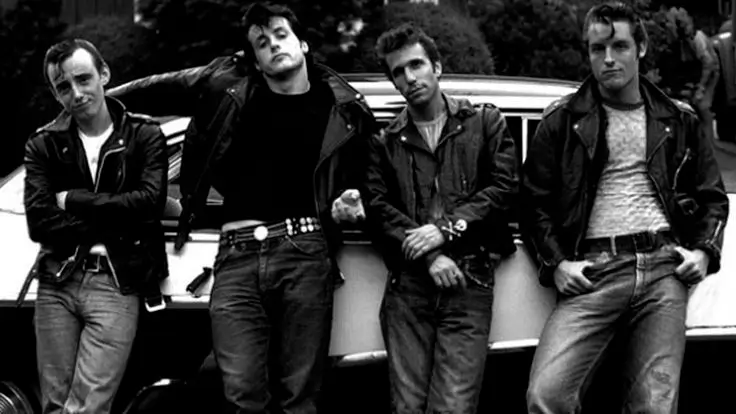
James Dean’s red windbreaker in “Rebel Without a Cause” became an emblem of youthful angst.
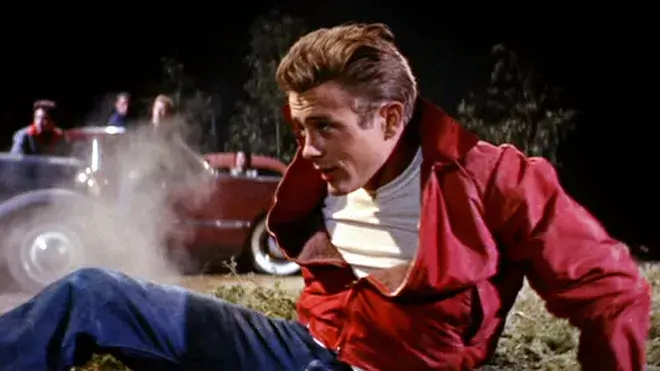
The 1960s mod fashion included miniskirts, inspired by the feminist movement and energetic pop music.
Bands like The Beatles popularized the Chelsea boot and collarless suits, while The Rolling Stones pushed the boundaries of androgyny with their flamboyant attire, directly influencing the psychedelic and vibrant clothing that dominated the era.
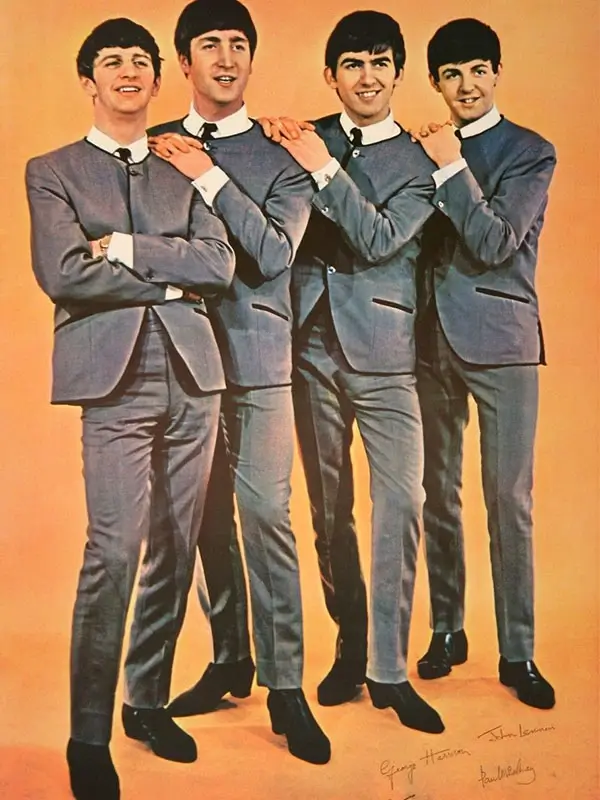
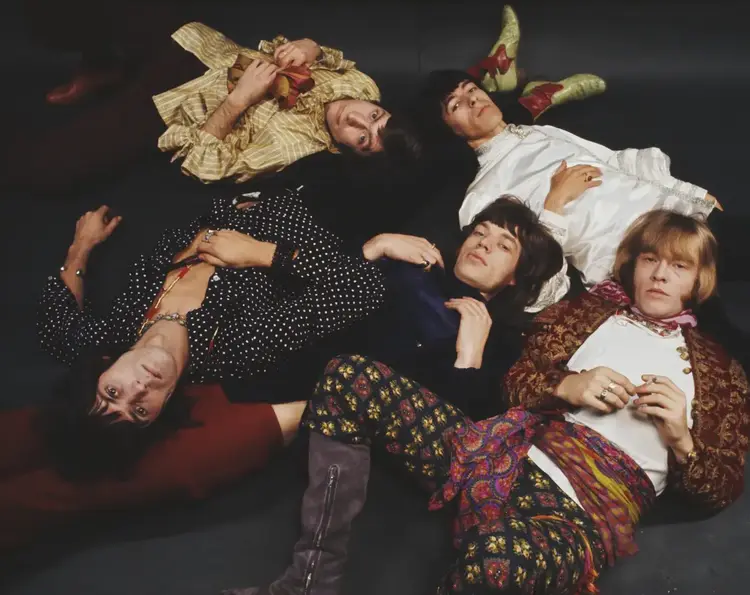
Image Credit: Getty Images
4.Disco and Punk: The 1970s Revolution
The 1970s were a time of stark contrasts in music and fashion.
The discotheques reverberated with the sounds of Bee Gees and Donna Summer, and the fashion was all about glamor and movement.
Shiny polyester shirts, high-waisted bell-bottoms, and platform shoes became disco staples, with every piece reflecting the disco ball’s sparkle.
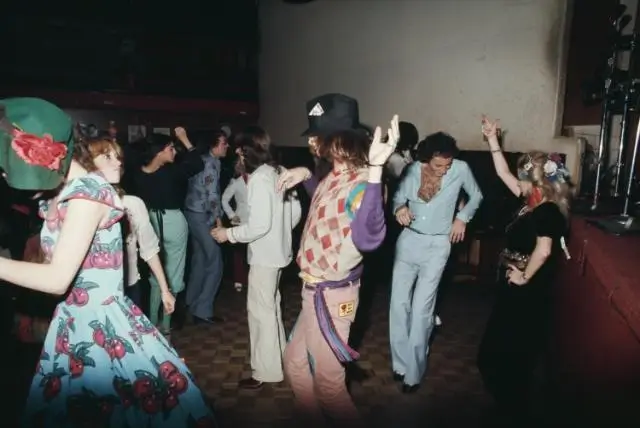
Image Cedit: Getty Images
On the other end of the spectrum, the punk movement reacted against this opulence.
Bands like the Sex Pistols and The Ramones popularized ripped jeans, DIY band tees, and leather jackets adorned with pins and patches.
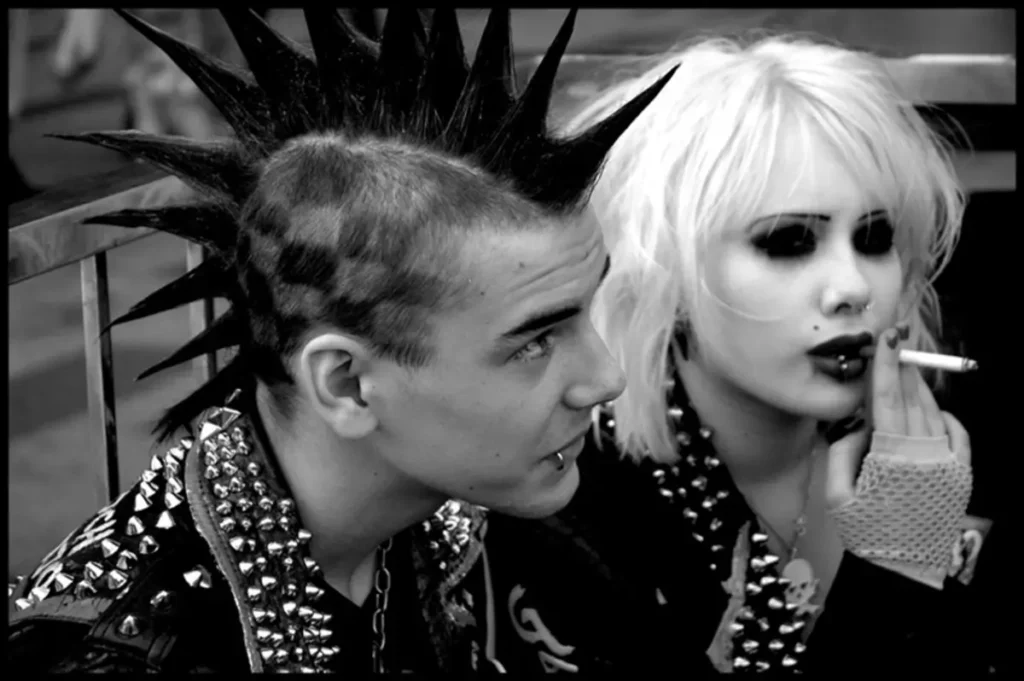
Image Credit: Acharai Deviantart
5.The Excess of the 1980s: Glam Rock, Hip Hop, and Power Dressing
The 1980s were all about excess and individual expression.
Glam rock musicians like David Bowie in his Ziggy Stardust persona wore elaborate costumes that included sequined jumpsuits and platform boots, pushing the boundaries of gender norms and inspiring a flamboyant, androgynous style in fashion.
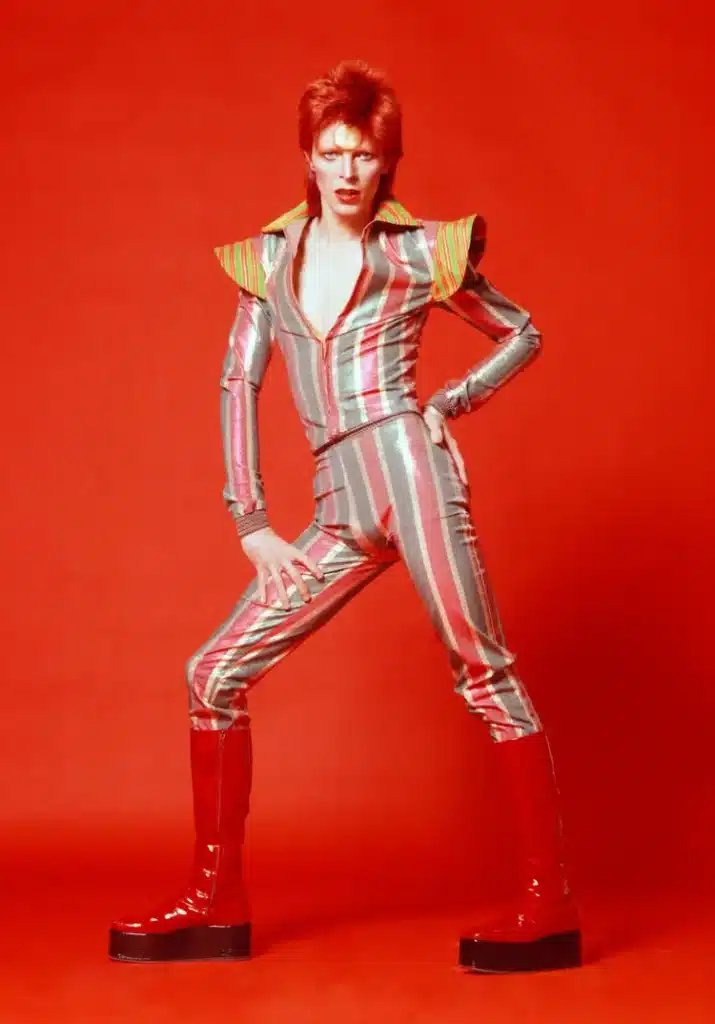
Image Credit: Masayoshi Sukita/Courtesy of The David Bowie Archive 2012
Hip hop’s influence was equally transformative, with Run DMC popularizing Adidas sneakers, tracksuits, and oversized gold jewelry.
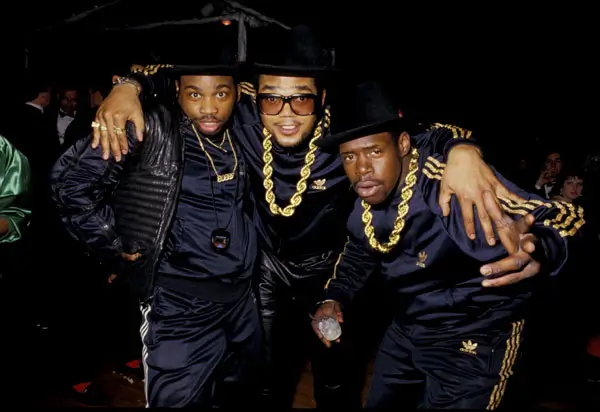
Which indirectly started the trend of music being directly linked to the popularization of sneakers.
The decade also saw the rise of power dressing, influenced by the assertive, synth-heavy pop music.
6.Grunge to Glamour: The 1990s Cultural Shift
The 1990s marked a departure from the 80s’ polished look, with grunge music inspiring a more laid-back, distressed style.
Kurt Cobain’s striped shirts, ratty cardigans, and Converse sneakers became the uniform for the youth, a stark contrast to the glitzy pop and hip-hop attire that also populated the era, something that streetwear and designer collections still take inspiration from today.
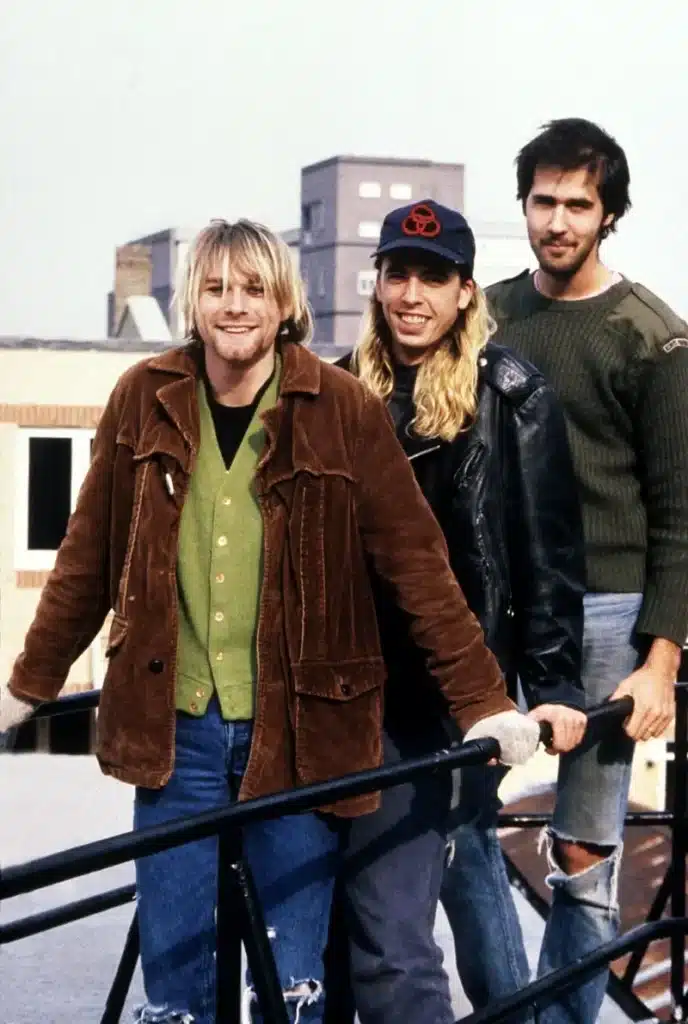
On the more glamorous side, the rise of supermodels and pop divas influenced fashion with their bold, body-conscious outfits.
The iconic Versace safety pin dress worn by Elizabeth Hurley is a perfect example of how music videos and celebrity culture began to influence high fashion, merging the world of music with runway extravagance.
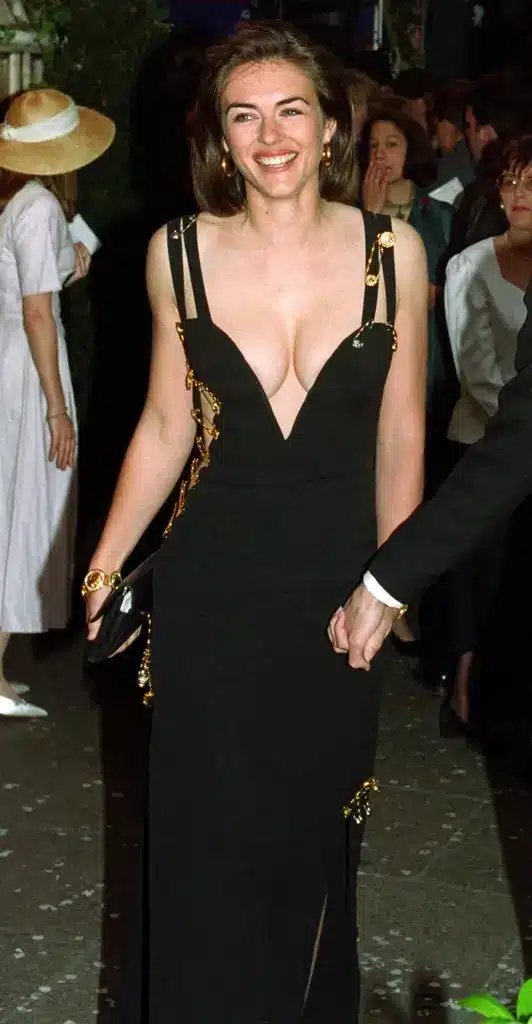
Image Credit; Michael Stephens – PA Images/Getty Images
7.Early 2000s: Y2K and the Rise of Pop Princesses
The turn of the millennium brought about a futuristic obsession in fashion, mirroring the techno beats of the time.
Pop icons like Britney Spears and Christina Aguilera wore metallic corsets and low-rise jeans, influencing a generation with their outfits and again showcasing the growing impact of music videos on fashion trends.
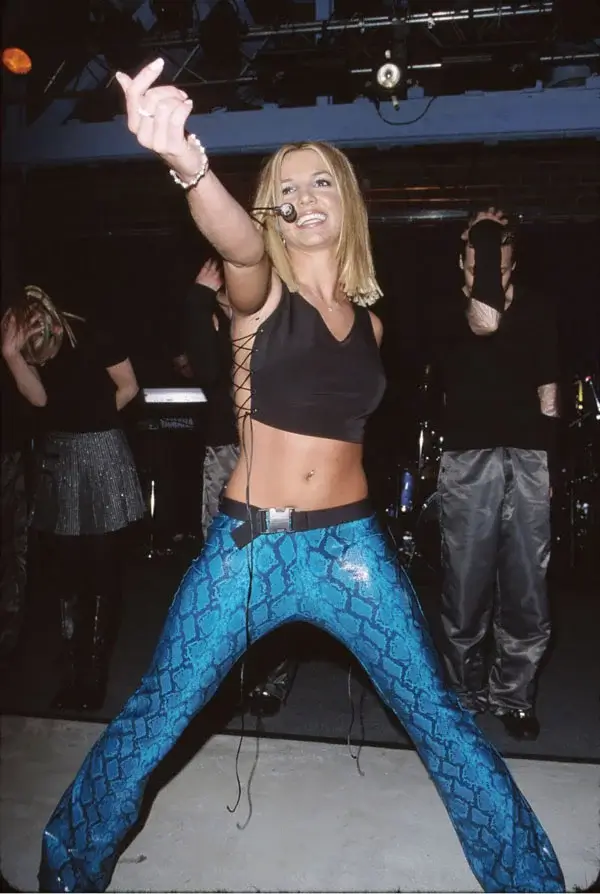
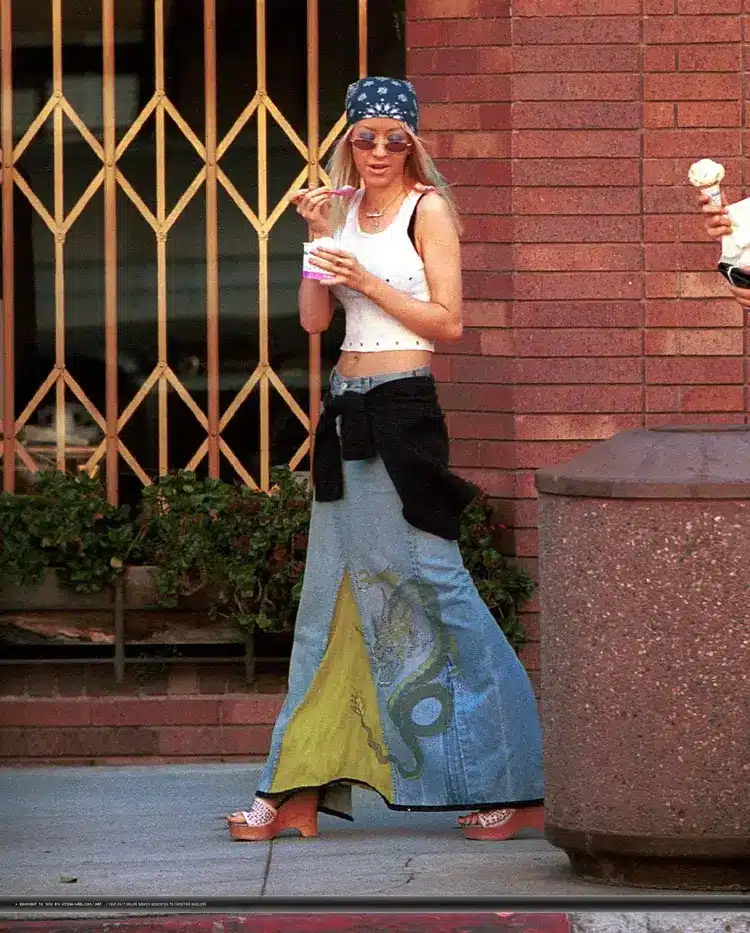
Image Credits: Getty | Steve Granitz
The era is famous for its unique accessories, including bedazzled cell phone cases and frosted lip gloss, directly reflecting the poppy, electronic sounds of Y2K music.
8.Mid-2000s: Emo and Urban Streetwear
The mid-2000s saw the rise of emo music, with bands like Fall Out Boy and My Chemical Romance inspiring a wave of skinny jeans, studded belts, and graphic band tees.
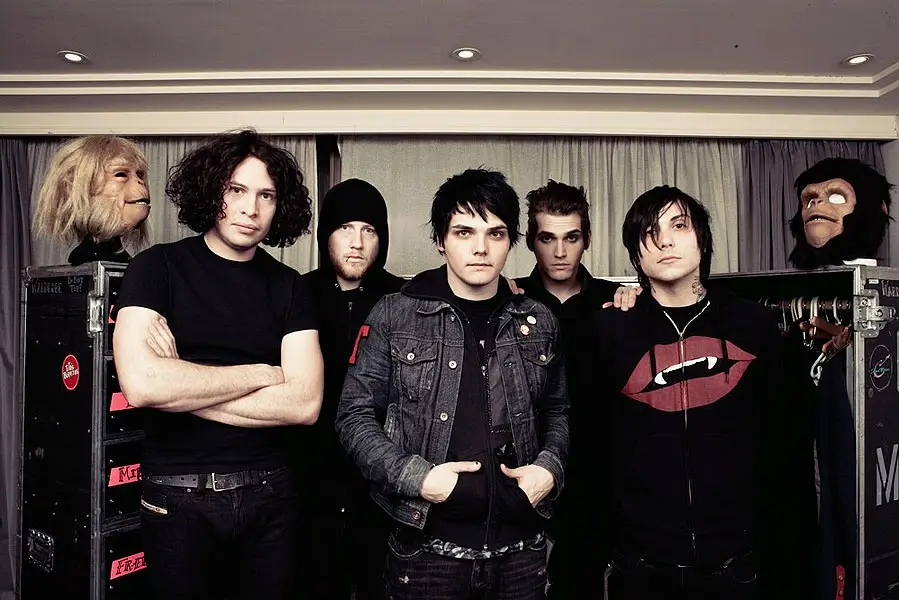
This era’s fashion was deeply personal, reflecting the introspective and emotional lyrics of emo songs.
Simultaneously, urban streetwear rose to prominence, with rappers like Jay-Z and Diddy launching their clothing lines, making baggy jeans, hoodies, and sneakers mainstream.


Image Credits: Getty/Theo Wargo
9.2010s: The Decade of Diversity and Sustainability
In the 2010s, the fashion world experienced a significant shift towards inclusivity and environmental consciousness, heavily influenced by the diverse and socially aware music of the era.
High fashion began to embrace a wider range of body types, ethnicities, and genders on the runway, reflecting a broader cultural movement towards equality and representation, seen in music icons like Beyoncé and Kendrick Lamar (in albums like TPAB and DAMN) championing these causes.
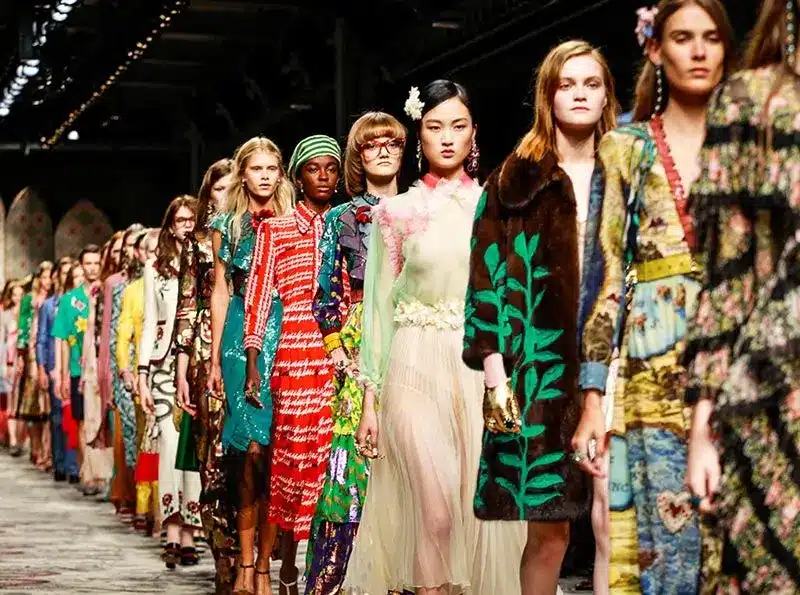
Sustainability became a hot topic, with designers and brands incorporating eco-friendly materials and processes, echoing the music industry’s growing emphasis on social and environmental issues.
Late 2010s to Early 2020s: Streetwear and High Fashion Merge
The late 2010s to early 2020s marked a revolutionary period where rap became the most popular music genre and streetwear ascended to the high fashion realm, driven by collaborations between streetwear brands and luxury fashion houses.
This era saw the rise of designers like Virgil Abloh, who, with his brand Off-White and tenure at Louis Vuitton, epitomized the blurring lines between streetwear and high fashion.
Influential music artists like Kanye West, A$AP Rocky, and Pharrell Williams further immortalizing themselves as fashion icons, setting trends and even launching their own successful fashion lines.
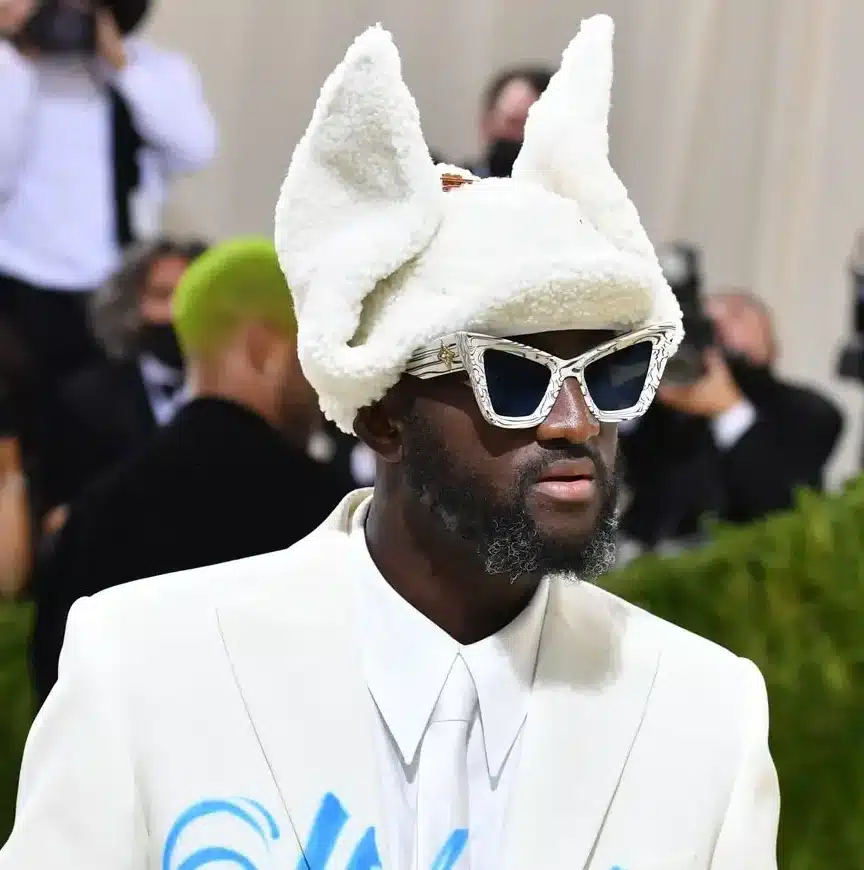

The influence of luxury rap was undeniable, with luxury brands adopting streetwear’s relaxed silhouettes, bold graphics, and sneaker culture, making them staples on the runway and the street.
Simultaneously, athleisure continued to dominate, reflecting a cultural shift towards more flexible lifestyles and fluid identities, with music videos and celebrity sightings further cementing its status.
10.The 2020s: The Digital and Virtual Era
The 2020s are witnessing an unprecedented integration of fashion with technology, reflecting the digital-heavy soundscapes of contemporary music.
Fashion is becoming increasingly niche and freeform, aligning with newer artists that are popular on platforms like TikTok and X leading to trends being set at a rapid pace.
Music now also appeals to younger demographics which led to Virtual and augmented reality experiences becoming increasingly common in both industries, with artists performing in virtual concerts and fashion shows taking place in entirely digital environments.
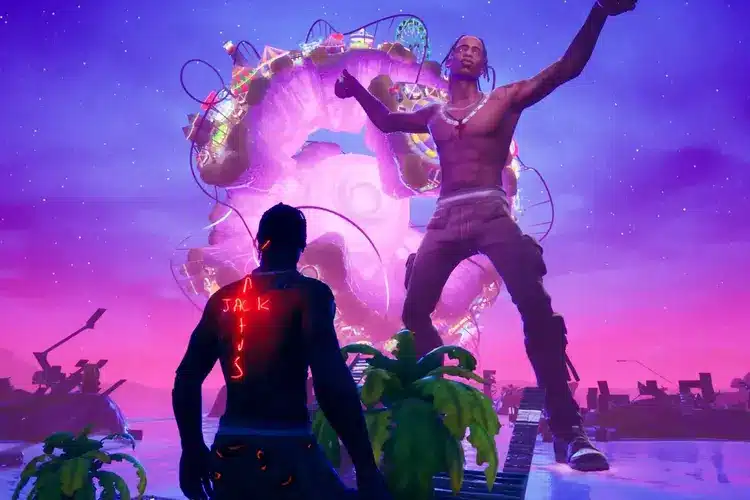
Image Credit: The Verge
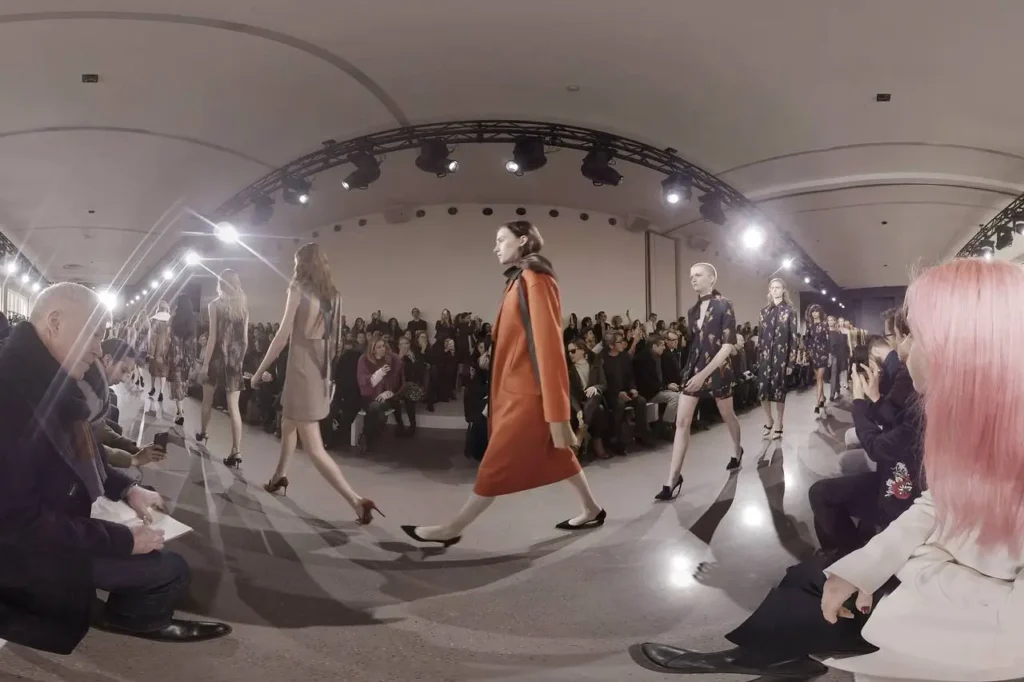
Image Credit: Elizabeth Holme & Jarrard Cole
The rise of gaming has introduced new avenues for fashion, with luxury brands designing exclusive outfits for digital avatars in games, a movement popularized by collaborations between Fortnite and high-profile brands.
The relationship between music and fashion is an ongoing symphony, with each era contributing its unique notes.
As we look back at the history of these two art forms, we see a constant evolution, driven by cultural shifts and technological advancements.
The future promises even more exciting developments, as new genres of music emerge and fashion continues to push the boundaries.
One thing is certain: the dance between music and fashion will continue, reflecting the ever-changing human spirit.

